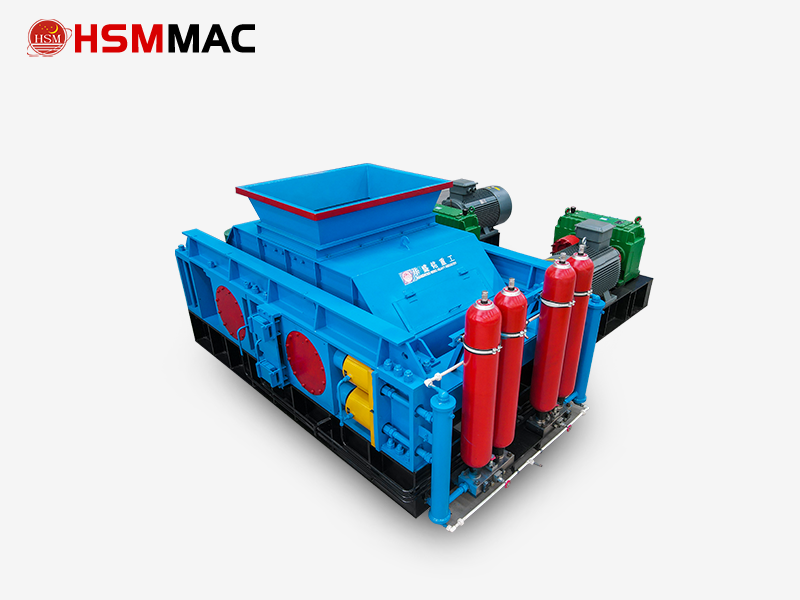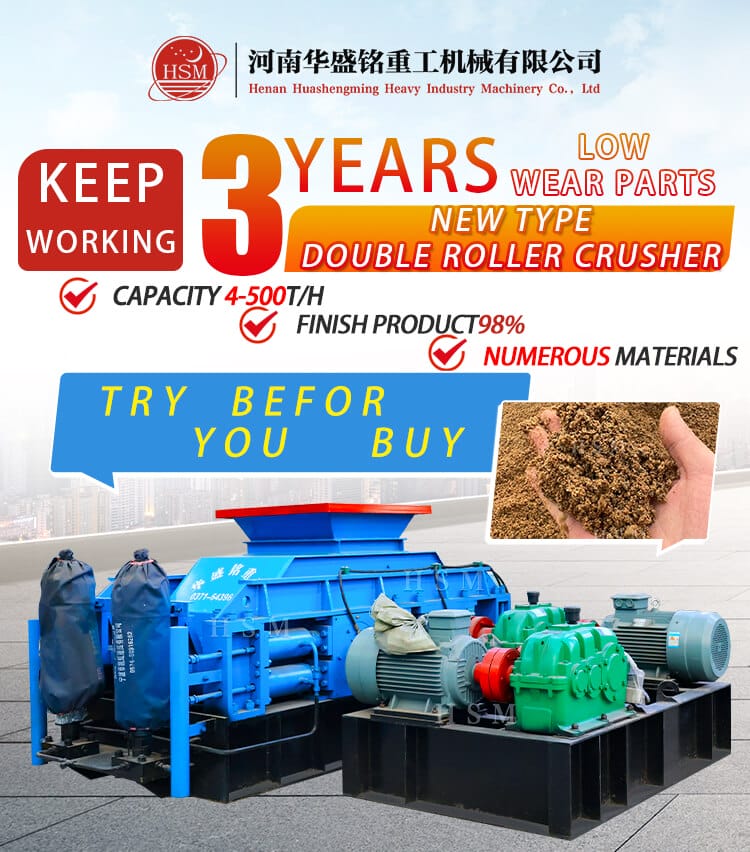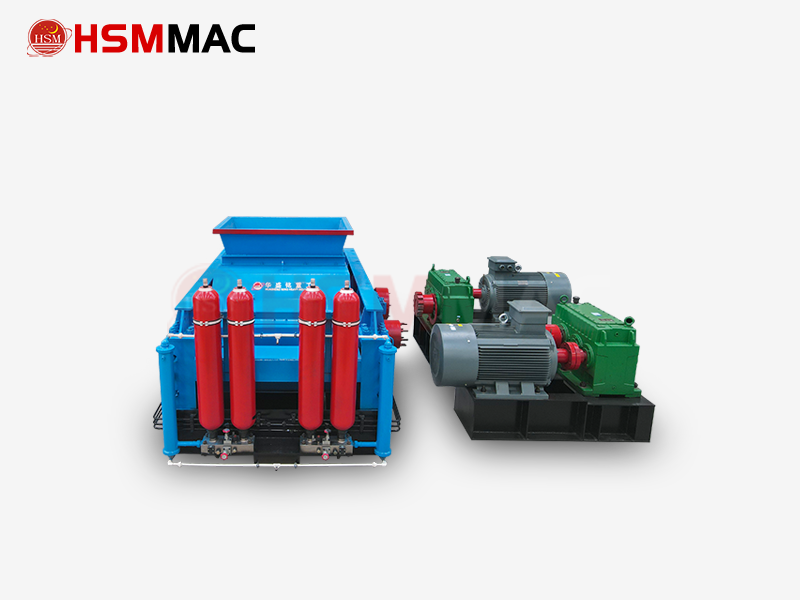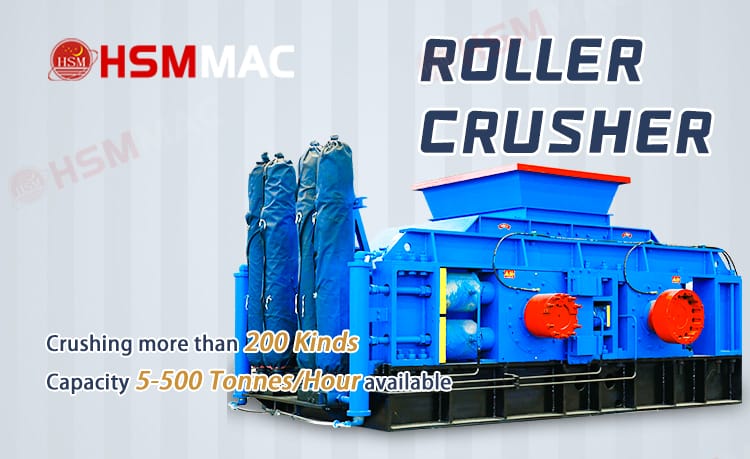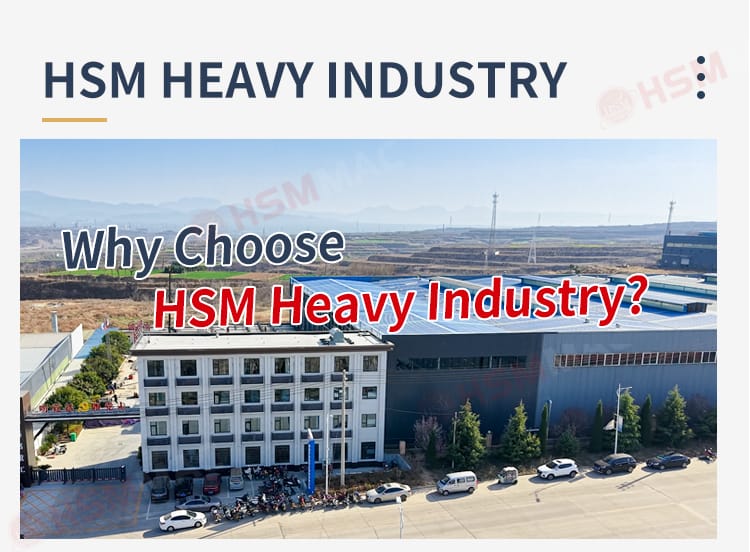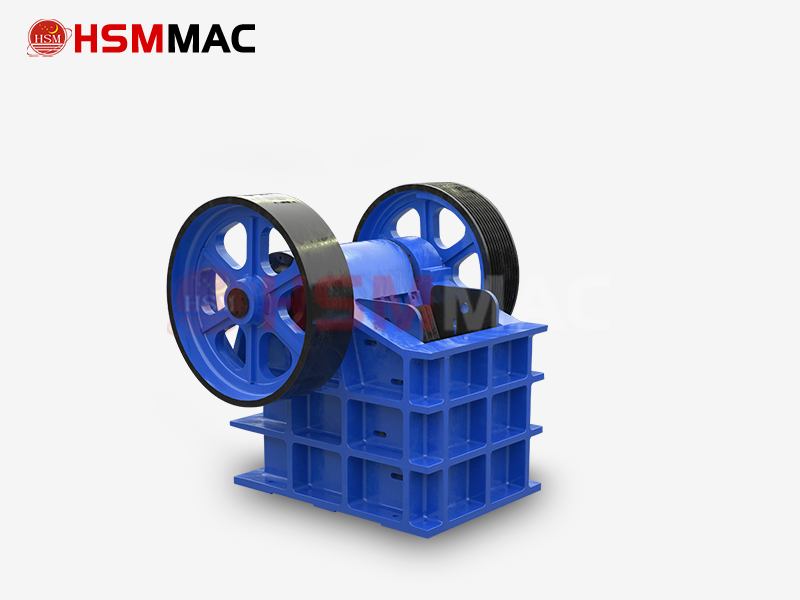The roller crusher demonstrates outstanding performance in the field of stone crushing, with its effects primarily manifested in precise particle size control, low energy consumption, excellent aggregate particle shape, and broad applicability. The following is a systematic analysis based on core advantages, technical parameters, applicable scenarios, and actual cases:
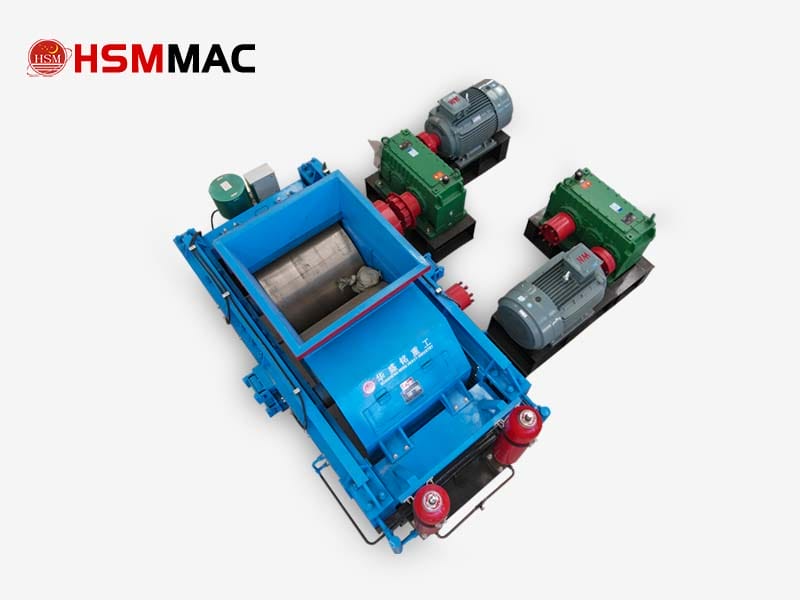
Double roller crusher
1. Double roller crusher Core Crushing Performance Advantages
Uniform and Controllable Particle Size
Precise Adjustment:
The roller gap can be flexibly adjusted via a hydraulic or spring system (typically 1–30 mm), enabling precise control of the output particle size within the 1–30 mm range. For example, when processing granite, it can produce multi-grade aggregates such as 5–10 mm and 10–20 mm, meeting the requirements for concrete aggregates or manufactured sand.
High cube particle ratio:
The compression crushing principle subjects the rock to shear forces, resulting in a cube particle ratio of ≥90% in the final product, with intact edges and corners, enhancing aggregate compressive strength and construction flowability.
Low over-crushing rate:
Flexible crushing reduces powder generation, with the 0–5mm fine powder ratio being 30%–50% lower than that of impact crushers, minimizing resource waste.
Highly efficient and energy-saving
Wide production capacity range:
Small machines (e.g., 2PGT400×250) have an hourly output of 2–10 tons, while large machines (e.g., 2PGY2000×1200) can reach 300–400 tons per hour, suitable for applications ranging from small-scale repairs to large-scale stone quarries.
Energy consumption reduced by 20%–30%:
Low-speed, high-torque design reduces power consumption, while a sealed structure minimizes dust leakage (emissions reduced by 40%–60%) and noise levels are ≤75 dB (≤65 dB with a soundproofing cover).
High adaptability
Compatible with multiple hardness levels of stone:
Capable of crushing hard materials with compressive strength ≤160 MPa (e.g., basalt, granite) and processing medium-hard and softer materials (e.g., limestone, river pebbles).
Wet material anti-adhesion design:
Special roller surface textures (e.g., wolf’s tooth pattern) prevent adhesion of high-moisture materials (moisture content ≤15%), and custom models can be equipped with scrapers to remove adhered materials.
2.Double roller crusher Key performance parameters and model recommendations
| Model | Production capacity (t/h) | Feed particle size (mm) | Discharge particle size (mm) | Applicable stone types | Features |
| Small (2PGT400×250) | 2–10 | ≤25 | Adjustable from 1–10 | Limestone, coal gangue | Mobile and flexible, small footprint |
| Medium (2PGY800×600) | 12–50 | ≤40 | Adjustable from 3–20 | Granite, river pebbles | Hydraulic adjustment, significant energy savings |
| Large (2PGY1500×1000) | 150–200 | ≤80 | Adjustable from 5–30 | Basalt, quartz stone | One-button start/stop, wear-resistant roller skin with a service life of 2 years |
| Sand Making Specialized (Customized) | 100–300 | ≤60 | Adjustable from 0–5 | Manufactured sand, fine aggregate production | Equipped with a grading screen, fine sand content ≥80% |
Note: The Huashengming 1510 model is specially designed for basalt, with a 20 cm thicker roller skin and a service life extended to 3 years.
3.Double roller crusher Efficiency Improvement and Maintenance Points
Optimize Operating Parameters
Control Feed Particle Size:
Feed diameter ≤ 1/9 of roller diameter (i.e., D ≥ 9r) to prevent overload caused by oversized stones.
Constant Feed Rate:
Prevent material buildup and blockages, ensuring uniform wear on the roller surface.
Moisture Management:
Pre-dry when moisture content > 15%, otherwise mud clumps may form, reducing efficiency.
Smart Maintenance Strategies
Regular Tightening and Lubrication:
Check bolt tightness every 3 months; clean bearings and replace lubricant annually.
Roll shell replacement:
High-chromium manganese steel roll shells have an average lifespan of 2–3 years. The modular design supports quick replacement of individual teeth (time required ≤2 hours).
Overload Protection:
The hydraulic system automatically retracts upon encountering foreign objects like rebar to prevent equipment damage.
4.Double roller crusher Application Scenarios and Economic Analysis
Mechanical Sand Production:
The double-roll sand-making machine can crush river pebbles and granite into 0–5 mm fine sand, with cubic particles enhancing concrete strength.
Mineral coarse/medium crushing:
Processes iron ore, quartzite, etc., achieving primary crushing to 20–30 mm, simplifying subsequent processes.
Economic Analysis:
Equipment investment ranges from tens of thousands to millions, but operational costs are 40% lower than jaw crushers, with a payback period of ≤1.5 years.
Typical Cases:
Granite Sand Production Project: Using a 2PGY1200×1200 double-roll crusher with a production capacity of 150 tons per hour, granite is crushed into 0–5mm artificial sand with a aggregate crush value ≤12%, used for high-speed rail concrete.
Basalt crushing:
The Huashengming 1510 model processes basalt (compressive strength 200 MPa) at a rate of 200 tons per hour, producing 5–10 mm aggregate directly used for road paving.
Summary
Double-roll crushers are ideal for aggregate crushing due to their precise and controllable particle size, high proportion of cubic aggregate, low energy consumption, and strong adaptability. Double-tooth roll models (such as the Huashengming 2PGY series) perform exceptionally well in hard rock processing, while the hydraulic intelligent adjustment system further enhances efficiency and stability. Selection should be based on rock hardness (granite/basalt requires large hydraulic models), production capacity requirements (from small 2 t/h to large 400 t/h), and particle size specifications (coarse aggregate or fine sand), while also prioritizing moisture control and regular maintenance to ensure long-term efficient operation.










